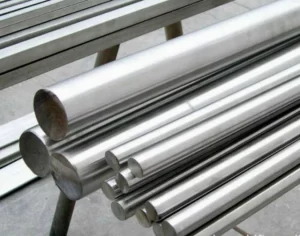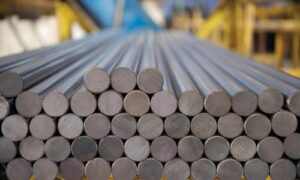Stainless steel has emerged as an indomitable force in the world of materials engineering, and within this realm, the 316 stainless steel round bar stands as an emblem of excellence. This comprehensive exploration aims to unravel the mystique of 316 stainless steel, unveiling its unique attributes and showcasing the compelling reasons why it should be the material of choice for your project. From its remarkable corrosion resistance to its diverse applications across industries, this article is your compass in navigating the vast landscape of 316 stainless steel.
The Allure of 316 Stainless Steel
What Makes 316 Stainless Steel Stand Out?
Before delving into the reasons to choose 316 stainless steel, it’s crucial to understand what sets it apart. At its core, 316 stainless steel is classified as an austenitic stainless steel alloy, and its chemical composition is a closely guarded secret to its exceptional properties. This alloy typically contains 16-18% chromium, 10-14% nickel, 2-3% molybdenum, and a smattering of trace elements.
The Keystone Properties
1. Immense Corrosion Resistance
The hallmark of 316 stainless steel is its unparalleled resistance to corrosion. This property is a game-changer, making it the preferred choice for applications immersed in moisture or exposed to harsh chemicals. Industries such as marine and chemical processing swear by its durability.
2. Resilience in the Face of Heat
316 stainless steel is no stranger to high temperatures. It retains its structural integrity and corrosion resistance even when subjected to scorching heat. This feature makes it indispensable in industrial furnaces and high-temperature exhaust systems.
3. Unyielding Strength and Durability
Boasting a high tensile strength and exceptional toughness, 316 stainless steel is synonymous with durability. It thrives under heavy loads and endures the harshest conditions, rendering it invaluable in structural and construction applications.
4. A Canvas for Fabrication
Versatility reigns supreme with 316 stainless steel. This alloy is a blank canvas that can be effortlessly molded through various fabrication techniques, including welding and forming, further cementing its status in diverse industries.
The Myriad Applications
Construction and Architecture: The Perfect Blend of Form and Function
In the realm of construction and architecture, 316 stainless steel round bars play a pivotal role as the backbone for structural components, handrails, and ornamental embellishments. Its fusion of strength, corrosion resistance, and aesthetic appeal makes it equally at home in both indoor and outdoor projects.
The Maritime Champion
True to its moniker, marine-grade stainless steel is the unsung hero of shipbuilding and maritime ventures. It takes center stage in crafting boat fittings, marine hardware, and equipment thrust into the relentless embrace of saltwater and the briny sea breeze.
Dominating the Chemical Arena
In chemical processing plants and laboratories, 316 stainless steel reigns supreme. It takes the form of tanks, pipes, valves, and pumps that must confront the corrosive agents and acids of the chemical world head-on.
The Food and Beverage Connoisseur
316 stainless steel is celebrated as a food-grade material, making it an indispensable ingredient in the recipe for safe food processing equipment. It stands strong in tanks, conveyors, and storage containers, ensuring the purity of consumables.
Purity in Pharmaceuticals
In the pharmaceutical industry, cleanliness is paramount. 316 stainless steel finds its place in the construction of pharmaceutical reactors, storage vessels, and piping systems where product purity is non-negotiable.
Revving Up in Automotive and Aerospace
The automotive and aerospace sectors rely on the lightweight yet robust nature of 316 stainless steel. It weaves its magic in exhaust systems, aircraft components, and various engine parts.
Precision in Medical Instruments
The medical world entrusts 316 stainless steel with its instruments and devices. This alloy, with its biocompatibility and corrosion resistance, is the bedrock of surgical instruments, orthopedic implants, and dental tools.
Conquering the Oil and Gas Frontier
The oil and gas industry relies heavily on 316 stainless steel in the creation of downhole equipment, pipelines, and offshore platforms. Its resistance to corrosion in harsh environments is the linchpin of its success in this arena.
Frequently Asked Questions (FAQ)
1. Is 316 stainless steel magnetic?
No, 316 stainless steel is typically non-magnetic. Its austenitic crystalline structure sets it apart from the magnetic properties of ferritic or martensitic stainless steel.
2. How does 316 stainless steel compare to 304 stainless steel?
Both 316 and 304 stainless steel belong to the austenitic alloy family, but 316’s inclusion of molybdenum elevates its corrosion resistance. Consequently, 316 shines in marine and chemical environments, while 304 is suitable for applications where corrosion resistance is less critical.
3. Can 316 stainless steel withstand outdoor exposure?
Absolutely. 316 stainless steel thrives in outdoor applications. Its corrosion resistance, even in saltwater environments, makes it an ideal choice for structures, handrails, and decorative elements exposed to the elements.
4. What distinguishes 316 stainless steel from its low-carbon counterpart, 316L?
316L stainless steel is a low-carbon variant of 316, offering even better corrosion resistance in applications involving welding. It is often preferred when welding is necessary to prevent carbide precipitation and subsequent corrosion.
In conclusion, the decision to choose 316 stainless steel round bars for your project is more than a matter of preference; it’s a testament to your commitment to quality, durability, and resilience. This remarkable alloy, with its exceptional corrosion resistance, strength, and versatility, has carved a niche in diverse industries. From towering skyscrapers to the depths of the ocean, 316 stainless steel remains an unwavering symbol of engineering excellence, ready to meet the challenges of your project head-on.


